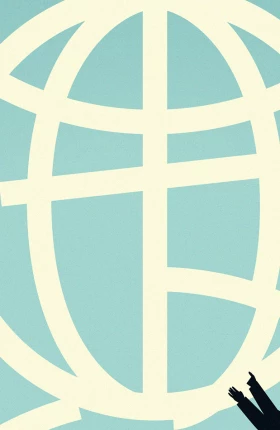Virtually every country in the world today is facing the same problem: in the wake of the recent financial crisis, its needs are bigger than its wallet. Nowhere is this more apparent than in the area of infrastructure.
In China, India, and other developing countries, population growth, increasing urbanization, and rising incomes are driving demand for new roads, schools, power stations, and water and sanitation systems. In the United States and most developed countries, the challenge is different: update, replace, and expand aging and obsolete infrastructure.
Globally, The Boston Consulting Group estimates that it will take an investment of some $4 trillion per year for the next 20 years to meet infrastructure demand.
But the funding isn’t there. Between 2008 and 2010, for example, total infrastructure spending averaged just $2.7 trillion per year worldwide. In most developed countries, it has been steadily declining as a percentage of GDP. So even if spending ticks upward as the recovery gains momentum, we still estimate a $1 trillion to $1.5 trillion annual shortfall through the year 2030.
Such funding shortages have significant health, safety, economic, and political implications.
For example, according to the U.S. Federal Highway Administration , more than 67,500 U.S. bridges are “structurally deficient.” Twenty-one percent of America's urban interstates and 10 percent of its rural interstates are rated in poor to fair condition . This already has led to tragedy, such as bridge collapses.
It's also costly. A 2011 study by the Texas A&M Transportation Institute estimated that bad roads and traffic congestion were draining some $121 billion per year from the U.S. economy in lost time, wasted fuel, added pollution, and vehicle wear and tear.
The problems are systemic. Many of America's ports are operating at or near capacity. Wastewater treatment plants are aging, leading to sewage spills. The electric power grid is congested. And the U.S. air traffic control system is dated.
The challenges are similar in scale elsewhere. China's booming economy and rapid urbanization are forcing it to build at a frenetic pace. In the past decade, more than 45,000 miles of expressway have been added, with plans to expand. China also has said it will add 82 new airports between 2011 and 2015, and expand another 101.
Other countries are busy as well.
As consultants to both business and government, we think one of the solutions to the global infrastructure challenge is to get the private sector more involved—not merely as hired hands, but as partners. Indeed, public-private partnerships (PPPs) could be a key part of the solution. But great care needs to be taken in how such arrangements are structured.
While governments worldwide wallow in red ink and mounting debt, the supply of private-sector capital is significant. As of 2010, insurance companies, pension funds, and sovereign-wealth funds held assets under management of $22 trillion, $19 trillion, and $4 trillion, respectively. With fixed-income returns near zero, many of those institutions, according to a 2012 Russell Investments survey , are looking for alternative investments, such as infrastructure projects.
The key to any public-private partnership, of course, is execution. Deals need to be transparent, long-term, and fair to all parties.
From the vantage point of public officials, the steps to success are clear: start with an overall infrastructure plan, select a project suitable for a PPP, and manage the project’s life cycle efficiently.
Unfortunately, few countries execute these steps well. Infrastructure planning is too often driven by short-term political agendas. The business cases and traffic forecasts for projects are frequently weak. And regulatory models often apportion risk unevenly, proving to be unreliable over the long term.
Still, public-private partnerships already are a fact of life. Chile, for example, has a long history of successful public-private projects, awarding 21 road projects between 1993 and 2001. In the United States, meanwhile, the Indiana Finance Authority just selected a private consortium to design, build, finance, operate, and maintain the East End Crossing, a bridge crossing the Ohio River near Louisville, Kentucky.
Airports, ports, water systems, and energy offer additional opportunities.
Despite the inherent complexities and occasional setbacks, public-private partnerships are a growing reality. Given the financial pressures of our time, they offer a practical solution to a global challenge.
This article originally appeared in the online version of USA Today .







